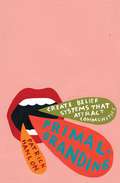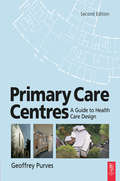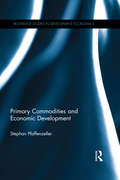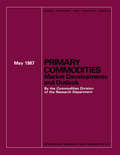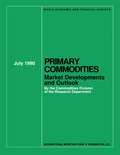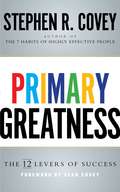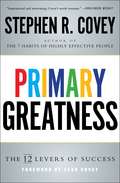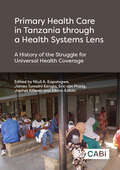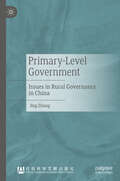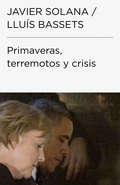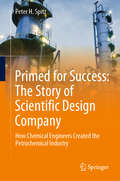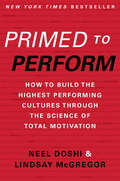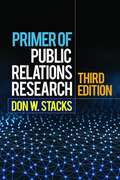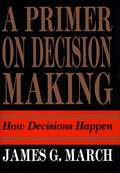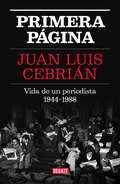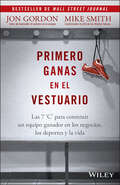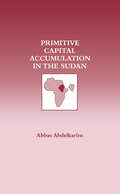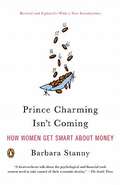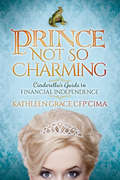- Table View
- List View
Primalbranding: Create Belief Systems that Attract Communities
by Patrick HanlonIn one of the most original books of its kind ever written, Patrick Hanlon explains how the most powerful brands create a community of believers around the brand, revealing the seven components that will help every company and marketer capture the public imagination -- and seize a bigger slice of the pie. What is the magic glue that adheres consumers to Google, Mini Cooper, and Oprah, but not to others? Why do many brands with great product innovation, perfect locations, terrific customer experiences, even breakthrough advertising fail to get the same visceral traction in the marketplace that brands like Apple, Starbucks, or Nike have? After years of working with famous brands like Absolut, Ford Motor Company, LEGO, Disney, Montblanc, Sara Lee, and others, Patrick Hanlon, senior advertising executive and founder of Thinktopia, decided to find the answers. His search revealed seven definable assets that together construct the belief system that lies behind every successful brand, whether it's a product, service, city, personality, social cause, or movement. In Primal branding, Hanlon explores those seven components, known as the primal code, and shows how to use and combine them to create a community of believers in which the consumer develops a powerful emotional attachment to the brand. These techniques work for everyone involved in creating and selling an image -- from marketing managers to social advocates to business leaders seeking to increase customer preference for new or existing products. Primal branding presents a world of new possibility for everyone trying to spark public appeal -- and the opportunity to move from being just another product on the shelf to becoming a desired and necessary part of the culture.
Primary Care Centres
by Geoffrey PurvesPrimary Care Centres explores the process of planning and designing buildings for frontline medical practice. Taking as a starting point the concept that good design contributes directly to healthy living, the book shows beneficial effects that a good design brief can bring to the staff, patients and visitors of health care facilities. It outlines principles for designs that are both practical and useful. International case studies of healthcare facilities in the UK, US, Japan and South Africa provide technical detail and give best practice examples of well-designed healthy living centres, with an emphasis on building performance and catering for the latest government policy developments. This new edition provides trusted guidance on investing in effective architecture for architects and project managers involved in the design of healthcare facilities. Dr Geoffrey Purves is Chairman of Purves Ash LLP, a firm of Architects in Newcastle upon Tyne. He has held a range of professional appointments with the Royal Institute of British Architects and is an Honorary Research Associate at Durham University.
Primary Commodities and Economic Development (Routledge Studies in Development Economics)
by Stephan PfaffenzellerOur post-industrialised global economy has achieved spectacular success and pushed back poverty to an extent previously thought impossible. This success is ultimately based on the continued supply of both renewable and non-renewable resources. Will this supply of primary commodities remain sufficient to support global economic growth? Why are the gains for countries specialising on commodity production often so limited? Can commodity dependent countries diversify into other economic activities? Primary Commodities and Economic Development addresses the changing position of primary commodities in the world economy and investigates their importance for commodity exporting under-developed countries. The book commences with a review of the theoretical foundations for inter-dependence between commodity specialisation and economic underdevelopment. Having related the role of commodity exports and the commodity terms of trade to growth models relevant to developing economies, the discussion shifts to an in-depth review of the statistical properties of the commodity terms of trade. The review of commodity price trends at the global level is then rounded off with a series of country case studies showing the concrete threats and opportunities surrounding commodity specialization. This book will be of essential reading for those with an interest in development economics and international economics, as well as for scholars of natural resource and agricultural economics.
Primary Commodities: By the Commodities Division of the Research Department, May 1987
by International Monetary FundOver the period 1980-86, both U. S. dollar commodity prices and real commodity prices have fluctuated around a declining trend (Chart 1). This period has been characterized by relatively low rates of growth in world economic activity, wide fluctuations in the value of the U. S. dollar, decreasing rates of inflation, and relatively high real rates of interest.
Primary Commodities: Market Developments and Outlook
by International Monetary FundCommodity prices experienced a strong recovery during 1987, after the steep decline of 1984–86. By December 1987 the Fund’s index of non-oil commodity prices was about 15 percent above the level of a year earlier in terms of SDRs, and some 30 percent higher in terms of the depreciating U. S. dollar. All commodity groups shared in the recovery, but the greatest strength came in agricultural raw materials and metals.
Primary Dealers in Government Securities
by Marco Arnone Piero UgoliniA report from the International Monetary Fund.
Primary Greatness
by Stephen R. CoveyStephen R. Covey believed there were only two ways to live life: a life of primary greatness or a life of secondary greatness. Through his books and speaking, he taught that the intrinsic rewards of primary greatness - integrity, responsibility and contribution - far outweighed the extrinsic rewards of secondary greatness - money, popularity and the self-absorbed, pleasure-ridden life that some people consider 'success'. In his posthumous work, Covey lays out the 12 levers of success that willl lead to a life of primary greatness: Integrity, Contribution, Sacrifice, Service, Responsibility, Loyalty, Reciprocity, Diversity, Learning and Renewal, For the first time, Covey defines each of these 12 qualities and how they can be leveraged and enacted in your daily life to lead you to success and happiness.
Primary Greatness: The 12 Levers of Success
by Stephen R. CoveyFrom Stephen R. Covey--the late, legendary author of The 7 Habits of Highly Effective People--a new set of rules for achieving a happy and fulfilling life of primary greatness.Many of us are hurting. We have chronic problems, dissatisfactions, and disappointments. Although we generally make it through the day, a lot of us feel overwhelmed by burdens we carry. We try to "lift the load of life" each day and sometimes it's just too much. The idea of living a "great life" seems a distant dream. Too often, however, we have the wrong idea of what a great life is. We think if only we had enough money, enough leisure, enough good looks or popularity, everything would be great. If that's what makes for a great life, no wonder so many of us feel so weighed down by the demands of everyday living. Stephen R. Covey believed there were only two ways to live: a life of primary greatness or a life of secondary greatness. Through his classic books and seminars, he taught that the intrinsic rewards of primary greatness--integrity, responsibility, and meaningful contribution--far outweighed the superficial rewards of secondary greatness--money, popularity, and the self-absorbed, pleasure-ridden life that some people consider "success." Dr. Stephen R. Covey's teachings are beloved and have inspired countless readers and leaders. Primary Greatness once again delivers classic Covey wisdom in a compact and digestible form. In this posthumous work, Covey lays out clearly the 12 levers of success that will lead to a life of primary greatness: Integrity, Contribution, Priority, Sacrifice, Service, Responsibility, Loyalty, Reciprocity, Diversity, Learning, Teaching, and Renewal. For the first time, Covey defines each of these twelve qualities and how they provide the leverage to make your daily life truly "great."
Primary Health Care in Tanzania through a Health Systems Lens: A History of the Struggle for Universal Health Coverage
by Marcel Tanner Don De Savigny Maryam Amour Mackfallen Anasel Rutasha Dadi Faisal Issa Mwandu Kini Jiyenze Godfrey Kacholi Antony Kapesa Leonard Katalambula Anosisye M. Kesale Stephen M. Kibusi Amani Kikula Erick Kitali George Kiwango Claud Kumalija Hadija Kweka Zarina Shamte Madabida Abel Makubi Innocent Mboya Romuald Mbwasi William Mfuko Chipole Mpelembe Gemini J. Mtei Oresto Michael Munishi Castory Munishi Elihuruma M. Nangawe Harrieth P. Ndumwa Frida N. Ngalesoni Jackline E. Ngowi Belinda J. Njiro William Reuben George M. Ruhago Bakari Salum Aifelo Sichalwe Nathanael Sirili Felix Sukums Bruno F. Sunguya Idda L. Swai Desderi Wengaa Chacha ManguRobust health care systems are paramount for the health, security, and prosperity of people and countries as a whole. This book provides for the first time a chronicle of the struggle for, and eventual success of, universal health coverage (UHC) in Tanzania. Beginning with an introduction to primary health care in the country, from its historical foundations to the major milestones of implementation, this book then considers stewardship of this important aspect of health systems over time. Written in a way to allow the application of lessons learned to other countries' contexts, this book covers: - Policy and governance issues such as leadership, human resources, and financing of health systems; - Practical aspects of health system delivery, including supply chains, community care, new technologies, and the integration of services for particular population groups; - The impact and mitigation of global events on health systems, such as resilience and preparedness in the light of disease outbreaks or climate change, and social, commercial, and political influences. Concluding with a look to the future, forecasting the changes and new solutions needed to adapt to a changing world, this book is a valuable reference for policy makers, global health practitioners, health system managers, researchers, students, and all those with an interest in primary health care and reforms - both in Tanzania and beyond.
Primary Resources and Energy in the Third World (Routledge Library Editions: Energy Resources)
by John SoussanOriginally published in 1988. In this clear yet stimulating introductory text John Soussan explores the issues and arguments involved using a variety of case studies from across the Third World, including the tin mining industry, Rio Tinto-Zinc and fuelwood in Kenya.
Primary-Level Government: Issues in Rural Governance in China
by Jing ZhangThis book examines what constitutes power in rural China, its structure, how it is exercised, and its practical consequences. The author&’s explorations are motivated by two key concerns. On one hand, theoretical questions about what rural political reforms in the first half of the 20th century did or did not accomplish continue to demand an adequate answer. On the other hand, any reasonable explanation for the recent surge in social conflicts in rural areas must begin with a sound understanding of how the rural power apparatus shapes both perception and behavior. The ten chapters present in-depth discussions of key issues such as where power comes from, how it is distributed and transmitted, the role of the state, the mechanics of how power is wielded, and what rural social conflicts reveal about both the inertia in politics and where opportunities for change might arise. The author argues that the historical trajectory of change in rural political institutions in the modern era is importantly a legacy of China&’s imperial past and more recent traumas. The state-building framework often used to analyze the modernization process in Europe is poorly applicable in the Chinese context, and economic analysis has but limited explanatory power. The book not only contributes to a deeper understanding of contemporary rural politics and governance in China but also sheds light on how the transition from tradition to modernity unfolds within particular historical, sociological and political contexts.
Primaveras, terremotos y crisis (Colección Endebate #Volumen)
by Javier Solana Lluís BassetUn análisis, desde un punto de vista privilegiado, de los acontecimientos que se sucedieron durante 2011 en el mundo y que marcaron un cambio de época. En Reivindicación de la política, publicado en septiembre de 2010, Javier Solana y Lluís Bassets repasaban los últimos 20 años de política internacional desde una privilegiada perspectiva. Pero el ritmo de los acontecimientos se aceleró y los doce meses posteriores fueron pródigos en acontecimientos: la primavera árabe, la crisis del euro, el auge de los BRICS, la muerte de Bin Laden, son solo algunas de las cuestiones que son analizadas en estas páginas por dos observadores de excepción.
Prime Coalition: Catalytic Capital for Climate Innovation
by Ramana Nanda Olivia Hull Benjamin N. RothWith long development timelines and high risk, new energy technologies were often left to languish in the "valley of death," unable to raise enough funds to bring a product to market. In 2014, Sarah Kearney founded the nonprofit Prime Coalition to solve this problem. At the beginning, Prime's role as a financial intermediary involved seeking out the most promising market-based technology solutions to climate change and recruiting foundations or philanthropists to fund them. In 2019, Prime changed course, adopting a portfolio approach with its Prime Impact Fund. By the end of the year, Prime had raised $40 million in philanthropic capital for its new fund. Once the funds were invested in promising energy startups, Prime planned to try its hand at recruiting traditional investors to back the same companies. Could Kearney convince traditional investors that these investments were worth the risks?
Primed for Success: How Chemical Engineers Created the Petrochemical Industry
by Peter H. SpitzThis is the remarkable story of an entrepreneurial firm that helped to create the petrochemical industry as we know it today. The author also highlights the important role chemical engineers played in developing and commercializing new technologies based on the conversion of hydrocarbons into petrochemicals, which also led to the transfer of technological dominance from Germany to the United States. These developments are illustrated by the participants’ personal histories, in the form of interviews and recorded oral histories. In addition, the book presents a highly relevant case study for engineers and managers in the chemical industry.
Primed to Perform: How to Build the Highest Performing Cultures Through the Science of Total Motivation
by Lindsay Mcgregor Neel DoshiWhy do some workplace cultures inspire energy and innovation, while others fuel anxiety, boredom, or cynicism? Until now, such legendary cultures have seemed like magic beyond our control. However, behind every culture is a surprisingly elegant science. Primed to Perform proves that the highest-performing cultures are built on a simple truth: why people work affects how well they work. Great organizations inspire the three most powerful motives for work--play, purpose, and potential--and eliminate the three most destructive--emotional pressure, economic pressure, and inertia. They create total motivation (or ToMo, for short). Total motivation cultures create the highest-performing employees and the most adaptive organizations.Authors Neel Doshi and Lindsay McGregor show that extraordinary performance at companies like Southwest Airlines, Starbucks, Apple, and Whole Foods comes from cultures that inspire total motivation. They describe how investment professionals, salespeople, teachers, and CEOs perform better when driven by total motivation. And, most important, they share how you can build a culture that inspires total motivation in every moment of every day.Primed to Perform builds on over a century of academic thinking as well as the authors' original research into how ToMo drives performance at iconic companies. It introduces the authors' highly predictive new measurement tool, the total motivation factor, which allows leaders to measure the strength of their culture and understand how it changes over time. It gives leaders the tools to transform their own workplaces.High-performing cultures can't be left to chance; organizations must create systems that shape and maintain them. Whether you're a five-person team or a start-up, an elementary school or a university, a nonprofit or a mega-institution, Primed to Perform shows you how.
Primer for Data Analytics and Graduate Study in Statistics
by Grant Schneider Douglas WolfeThis book is specially designed to refresh and elevate the level of understanding of the foundational background in probability and distributional theory required to be successful in a graduate-level statistics program. Advanced undergraduate students and introductory graduate students from a variety of quantitative backgrounds will benefit from the transitional bridge that this volume offers, from a more generalized study of undergraduate mathematics and statistics to the career-focused, applied education at the graduate level. In particular, it focuses on growing fields that will be of potential interest to future M.S. and Ph.D. students, as well as advanced undergraduates heading directly into the workplace: data analytics, statistics and biostatistics, and related areas.
Primer of Public Relations Research
by Don W. StacksChapter on standardization, moving beyond the prior edition's focus on best practices. Chapter on different types of data sets, with attention to the advantages and disadvantages of using Big Data. Addresses the strategic use of key performance indicators. Covers the latest content analysis software.
Primer on Climate Change and Sustainable Development
by Mohan Munasinghe Rob SwartClimate change and variability has become the primary environmental concern of the 21st Century. The potential impacts and mitigation of climate change need to be analyzed within the context of sustainable development. Primer on Climate Change and Sustainable Development presents a condensed and accessible review of the latest state-of-the-art assessments of the Intergovernmental Panel on Climate Change. The book begins with a foreword from the chair of the IPCC. Our current knowledge of the basic science of climate change is described, before moving on to future scenarios of development within the context of climate change. Possible adaptation and mitigation measures, including cost and benefit analysis, are discussed. The book will be an invaluable textbook for students of environmental science and policy, and researchers and policy makers involved in all aspects of climate change.
Primer on Decision Making: How Decisions Happen
by James G. MarchBuilding on lecture notes from his acclaimed course at Stanford University, James March provides a brilliant introduction to decision making, a central human activity fundamental to individual, group, organizational, and societal life. March draws on research from all the disciplines of social and behavioral science to show decision making in its broadest context. By emphasizing how decisions are actually made -- as opposed to how they should be made -- he enables those involved in the process to understand it both as observers and as participants.March sheds new light on the decision-making process by delineating four deep issues that persistently divide students of decision making: Are decisions based on rational choices involving preferences and expected consequences, or on rules that are appropriate to the identity of the decision maker and the situation? Is decision making a consistent, clear process or one characterized by ambiguity and inconsistency? Is decision making significant primarily for its outcomes, or for the individual and social meanings it creates and sustains? And finally, are the outcomes of decision processes attributable solely to the actions of individuals, or to the combined influence of interacting individuals, organizations, and societies? March's observations on how intelligence is -- or is not -- achieved through decision making, and possibilities for enhancing decision intelligence, are also provided.March explains key concepts of vital importance to students of decision making and decision makers, such as limited rationality, history-dependent rules, and ambiguity, and weaves these ideas into a full depiction of decision making.He includes a discussion of the modern aspects of several classic issues underlying these concepts, such as the relation between reason and ignorance, intentionality and fate, and meaning and interpretation.This valuable textbook by one of the seminal figures in the history of organizational decision making will be required reading for a new generation of scholars, managers, and other decision makers.
Primer on Multiples Valuation and Its Use in Private Equity Industry
by Victoria Ivashina Henrik BoeThis note explores the mechanics of multiples, different types of multiples, when and how to use them, and common pitfalls associated with multiples valuation. While a multiples approach is a very convenient valuation method, breaking down the underlying assumptions can significantly improve the robustness and power of multiples valuation.
Primera página: Vida de un periodista 1944-1988
by Juan Luis CebriánPrimera página son las memorias de Juan Luis Cebrián, primer director de El País, pero también el apasionante relato de los convulsos años que llevaron a España de una sangrienta y rancia dictadura a la democracia, contado por un testigo imprescindible. Nacido en Madrid en 1944, en una familia de periodistas, Juan Luis Cebrían pronto empezó a pisar las principales redacciones de la prensa de la época, primero la de Pueblo, luego la de Informaciones, donde fue subdirector con apenas 20 años, y también la de Cuadernos para el diálogo, cuyo espíritu fue un ensayo de la convivencia que haría posible la transición. Tras un fugaz paso por la dirección de informativos de RTVE, fue el primer director de El País, que pronto se convirtió en el periódico de referencia de España y símbolo de la reconquista de las libertades y la aspiración a una sociedad moderna y europea. Fueron años muy intensos que Cebrián vivió en primera línea, con secuestros de empresarios, atentados contra las redacciones, tensión en las calles, guerras soterradas por el control de un medio de comunicación que se hacía cada vez más poderoso, y hasta un golpe de Estado que amenazó con descarrilar el tren de la democracia. «Naturalmente, los hechos aquí relatados son todos ciertos, lo que no quiere decir que la versión de los mismos sea la única posible. He descrito mis relaciones con el poder, mis visiones profesionales, mis convicciones intelectuales. No pretendo que este sea un documento histórico, tampoco un ditirambo autocomplaciente ni emprender una saga de pequeñas venganzas contra nadie. Tampoco voy ahora a establecer verdades absolutas en las que no creo. Trato solo de explicar mis sentimientos, mis reacciones, mis apegos y desapegos en las vicisitudes varias en las que la vida me ha puesto.»Juan Luis Cebrián Primera página, que se lee con la tensión de una novela de aventuras, es un testimonio imprescindible de un periodo crucial de la historia reciente de España.
Primero Ganas en El Vestuario: Las 7 'C' para construir un equipo ganador en los negocios, los deportes y la vida (Jon Gordon)
by Jon Gordon Mike SmithMike Smith, director técnico de la Liga Nacional de Fútbol Norteamericano (NFL), lideró uno de los cambios radicales más extraordinarios en la historia de la NFL. En la temporada anterior a su llegada, en 2008, los Atlanta Falcons tenían un récord de 4 a 12, era la primera vez que la franquicia había ganado temporadas consecutivas. Bajo el liderazgo de Smith, los Falcons ganaron 11 a 5 en su primera temporada y continuarían siendo los eternos candidatos de las playoff y del Super Bowl. Gracias a estos logros, Smith recibió el premio al entrenador del año otorgado por la Associated Press (AP) en 2008 y sus colegas lo eligieron como el «entrenador del año» en 2008, 2010 y 2012. En el libro «Primero ganas en el vestuario» descubrirás las experiencias extraordinarias del entrenador Mike Smith y Jon Gordon, consultor de diferentes colegas y equipos profesionales, para conocer los principios más poderosos que toda empresa, escuela, organización o equipo de deporte pueden adoptar para renovar su organización. Paso a paso, los autores remarcaron la estrategia para construir una organización próspera y brindar un marco de trabajo práctico que le ofrece a los líderes las herramientas necesarias para crear una gran cultura, liderar con la mentalidad correcta, crear relaciones fuertes, mejorar el trabajo en equipo, desempeñarse a un nivel superior y evitar las dificultades que sabotean a muchísimos líderes y organizaciones. Además de compartir todos los cambios positivos de los Falcons, Smith también comparte honestamente todos los errores de sus últimas dos temporadas y nos brinda lecciones invaluables de las cuales los líderes pueden aprender sus victorias, éxitos, fracasos y errores. Ya sea un equipo de liderazgo ejecutivo de una de las compañías de Fortune 500, un equipo de deportes, de una sala de emergencias, militar o educativo, los líderes exitosos entrenan, transforman, enseñan, alientan y guían a sus equipos. Gracias a todo esto el equipo y los líderes mejoran, al igual que sus relaciones, conexiones y organización. En el libro «Primero ganas en el vestuario » podrás leer sobre el detrás de escena de uno de los trabajos de liderazgo que más presión enfrenta en el mundo. También, como líder encontrarás historias y experiencias que te ayudarán a construir tu propio equipo ganador. This is the Spanish translation of You Win in the Locker Room First: The 7 C's to Build a Winning Team in Business, Sports, and Life by Jon Gordon.
Primitive Capital Accumulation in the Sudan
by Abbas AbdelkarimThis title available in eBook format. Click here for more information.Visit our eBookstore at: www.ebookstore.tandf.co.uk.
Prince Charming Isn't Coming
by Barbara StannyNow updated?the classic guide that teaches women how to take control of their own finances When this groundbreaking yet compassionate book was first published ten years ago, it lifted a veil on women?s resistance to managing their money, revealing that many were still waiting for a prince to rescue them financially. In this revised edition, which reflects our present-day economic world, Barbara Stanny inspires readers to take charge of their money and their lives. Filled with real-life success stories and practical advice?from tips on identifying the factors that keep women fearful and dependent to checklists and steps for overcoming them?this book is the next best thing to having one?s own financial coach. .
Prince Not So Charming: Cinderella's Guide to Financial Independence (Prince Not So Charming Ser.)
by Kathleen GraceA certified financial planner narrates a woman&’s journey to financial independence, providing money management tips for single, married or divorced women. In Prince Not So Charming, you will take a riveting journey with Cinderella as she navigates romance, emotional upheaval, and near-financial-death experiences—all of which lead her to find inner strength despite seemingly insurmountable setbacks. Nine out of ten women will be solely responsible for their finances at some point in their lives. Prince Not So Charming is a call to action that will inspire and empower you to take control of your finances regardless of the obstacles you face, plus you&’ll learn: · Strategies for women to regain power and avoid financial ruin · How to maintain financial independence—whether you're married, single, or contemplating divorce—and why this is so important · Financial strategies to help you safeguard yourself and those you love · Ideas to reduce the financial and emotional burdens of divorce Whether you're a high-powered executive or a single mom struggling to make ends meet, Prince Not So Charming will encourage you to claim your power to create and protect your financial future.
